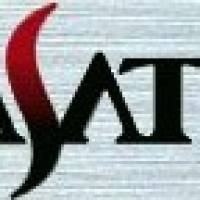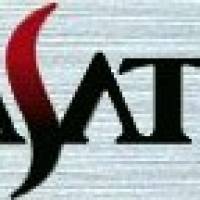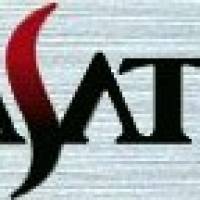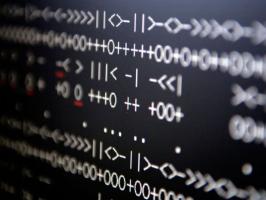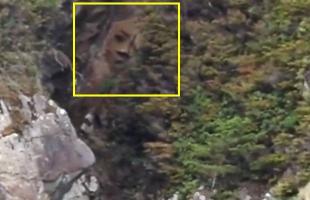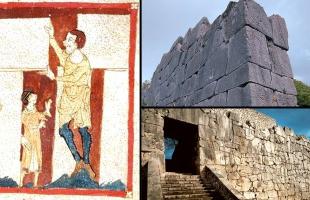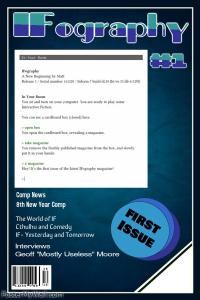Copy Link
Add to Bookmark
Report
Hacking ARPANET (part 6)

***************************************
Hacking ARPANET -- Part VI
by
The Source
***************************************
This last part of the Hacking ARPANET series provides some more iformation
on the types of things that you can learn from the EXEC, and concludes by
explaining how to log onto the system and how passwords are structured.
Once you are onto the EXEC, as explained in Part I, you should get into
the QUERY function which is also explained earlier. QUERY will tell you just
about all you need to know about anyone, including their business phone numbers
and the locations of certain military employees.
@N
TOP
NIC/Query is a database system containing information about the Defense Data
Network (DDN)...
1. INTERNET PROTOCOLS -- Describes Internet protocols
2. PROGRAMS -- Describes programs available on DDN hosts
3. PERSONNEL -- Directory of DDN users
4. HOSTS -- Describes DDN hosts
5. RFCS -- Requests For Comments technical notes
6. IENS -- Internet Experiment Notes
7. NIC DOCUMENTS -- Documents available from the NIC
_ for back, ^ for up, + for top, or menu # (1-7): 4
HOSTS
-----
We have selected menu item 4, "HOSTS".
HOSTS -- Describes DDN hosts
1. BY NAME -- Description of hosts by DDN hostname
2. BY CPU -- List of hosts by CPU type
3. BY OS -- List of hosts by Operating System
_ for back, ^ for up, + for top, or menu # (1-3): 1
If we were especially interested in working on one or another computer, a
CRAE, for example, we would select menu item 2. Or, if we wanted to learn a new
operating system, we could select menu item 3. But let's see what's available
under menu item 1:
HOSTS BY NAME -- Description of hosts by DDN hostname
To show the entry for a host, type its official name or nickname.
To get a menu of hostnames, select the appropriate choice below.
1. ARPANET HOSTS-A-G
2. ARPANET HOSTS-H-R
3. ARPANET HOSTS-S-Z
4. MILNET HOSTS-A-F
5. MILNET HOSTS-G-M
6. MILNET HOSTS N
7. MILNET HOSTS-O-Z
8. ARPANET TACS
9. MILNET TACS
10. GATEWAYS
_ for back, ^ for up, + for top, or menu # (1-10): 10 <let's take a look>
GATEWAYS
1. AERONET-GW 2. AMES-NAS-GW 3. ARPA-MILNET-GW
4. BBN-CRONUS-GW 5. BBN-FIBERA-GW 6. BBN-MILNET-GW
7. BBN-MINET-A-GW 8. BBN-NET-GATEWAY 9. BBN-PR-GW
10. BBN-VAN-GW 11. BBN-X25-GW 12. BRAGG-PR-GW1
13. BRAGG-PR-GW2 14. BRL-GATEWAY 15. BRL-GATEWAY2
16. CIT-CS-GW 17. CMU-GATEWAY 18. COLUMBIA-GW
19. CORNELL-GW 20. CSNET-PDN-GW 21. CSS-GATEWAY
22. CSS-RING-GW 23. DARPA-GW 24. DCEC-GATEWAY
25. DCEC-MILNET-GW 26. DCEC-PSAT-IG 27. DCN-GATEWAY
28. DTNSRDC-GW 29. HARVARD-GW 30. HUEY-GW
31. IPTO-GW 32. ISI-GATEWAY 33. ISI-MCON-GW
34. ISI-MILNET-GW 35. ISI-PSAT-IG 36. LBL-MILNET-GW
37. LL-GW 38. LL-PSAT-IG 39. LOUIE-GW
40. MARYLAND-GW 41. MIT-GW 42. NLM-GW
43. NOSC-GW 44 NRL-CSS-GW 45. NSRDCOA-GW
4.. NYU-GW 47. PURDUE-CS-GW 48. RAD-PSAT-IG
49. RIACS-GW 50. S1-B-GW 51. SAC-GATEWAY
52. SAC-GW-2 53. SAC-MILNET-GW 54. SRI-C3ETHER-GW
55. SRI-MILNET-GW 56. SRI-PR-GW1 57. SRI-PR-GW2
58. SRI-PR-GW3 59. STANFORD-GATEWAY 60. TACTNET-GW
61. UDEL-GW -- University of Delaware
62. UR-CS-GW -- University of Rochester
63. UTAH-GATEWAY -- University of Utah
64. UW-VLSI-GW -- University of Washington
65. WISC-GATEWAY -- University of Wisconsin
66. WSMR-NET-GW -- White Sands Missile Range
67. YALE-GW -- Yale University
68. YUMA-GW -- Army Yuma Proving Ground
<menu item 9>
MILNET TACS
1. ACCAT-TAC 2. AFGL-TAC
3. AFSC-AD-TAC 4. AFSC-HQ-TAC
5. AFSC-SD-TAC 6. AFWL-TAC
7. AMES-TAC 8. ANNIS-MIL-TAC
9. ARDC-TAC 10. ARPA1-MIL-TAC
11. ARPA2-MIL-TAC 12. BBN-MIL-TAC
13. BRL-TAC 14. BROOKS-AFB-TAC
15. CINCPAC-TAC 16. CORADCOM-TAC
17. CORADCOM2-TAC 18. DARCOM-TAC
19. DAVID-TAC 20. DCEC-MIL-TAC
21. DCEC-TAC 22. DDN-PMO-MIL-TAC
23. DUGWAY-MIL-TAC 24. FRANKFURT-MIL-TAC
25. GUNTER-TAC 26. KOREA-TAC
27. MICOM-TAC 28. MINET-BRM-TAC
29. MINET-CPO-TAC 30. MINET-HDL-TAC
31. MINET-HLH-TAC 32. MINET-LON-TAC
33. MINET-OBL-TAC 34. MINET-RAM-TAC
35. MINET-RDM-TAC 36. MINET-SIG-TAC
37. MINET-VHN-TAC 38. MITRE-TAC
39. NCAD-MIL-TAC 40. NORL-MIL-TAC
41. NPS-TAC -- Naval Postgraduate School
42. NSWC-TAC -- Naval Surface Weapons Center
43. NWC-TAC -- Naval Weapons Center
44. PAX-RV-TAC -- Naval Electronics Systems Command
45. PENTAGON-TAC -- Air Force Data Services Center/SFA
46. RADC-TAC -- Rome Air Development Center
47. RAND2-MIL-TAC -- The Rand Corporation
48. ROBINS-TAC -- Warner-Robins ALC/MMECDM
49. SAC1-MIL-TAC -- Strategic Air Command/ADXCC Headquarters
50. SAC2-MIL-TAC -- Headquarters, Strategic Air Command
51. SCOTT-TAC -- Air Force Communications Command
52. SCOTT2-MIL-TAC -- Air Force Communications Command
53. SRI-MIL-TAC -- SRI International
54. STLA-TAC -- Army Information Systems Command - St. Louis
55. TINKER-MIL-TAC -- Tinker Air Force Base
56. USGS2-TAC -- U.S. Geological Survey
57. USGS3-TAC -- U.S. Geological Survey
58. WPAFB-TAC -- Aeronautical Systems Division/ADOS
59. WSMR-TAC -- White Sands Missile Range
60. YUMA-TAC -- Army Yuma Proving Ground
<If you're interested in more information about the system, simply enter its
menu number as in the examples below:>
43. NWC-TAC -- Naval Weapons Center
SRI-MIL-TAC
SRI International (SRI-MIL-TAC)
Telecommunications Sciences Center
Network Information Center
333 Ravenswood Avenue
Menlo Park, California 94025
NetNumber: 26.3.0.73
Configuration: C/30
Protocols: TCP/TELNET,ICMP
Liaison:
Roode, R. David ROODE@SRI-NIC
(RAND2-MIL-TAC)
Room 145
1700 Main Street
Santa Monica, California 90406
NetNumber: 10.0.0.7
Configuration: C/30
Protocols: TCP/TELNET,ICMP
Liaison:
Collins, Colleen S. Colleen@RAND-UNIX
(213) 393-0411
<note that the data always includes the system's network number, NetNumber,
this is a useful feature if you want to use your local node to dial up the
remote system>
PROGRAMS
--------
The EXEC also stores a list of programs and you can find out where to
look for them on various network nodes. The programs are organized by menu
as in the examples below:
PROGRAMS
1. BY NAME
2. PROGRAM LIST
2
PROGRAM LIST
1. 11COPY 2. 2LABEL 3. @ 4. PROGRAMS-A
5. PROGRAMS-B 6. PROGRAMS-C 7. PROGRAMS-D 8. PROGRAMS-E
9. PROGRAMS-F 10. PROGRAMS-G 11. PROGRAMS-H 12. PROGRAMS-I
13. PROGRAMS-J 14. PROGRAMS-K 15. PROGRAMS-L 16. PROGRAMS-M
17. PROGRAMS-N 18. PROGRAMS-O 19. PROGRAMS-P 20. PROGRAMS-Q
21. PROGRAMS-R 22. PROGRAMS-S 23. PROGRAMS-T 24. PROGRAMS-U
25. PROGRAMS-V 26. PROGRAMS-W 27. PROGRAMS-X 28. PROGRAMS-Y
29. PROGRAMS-Z
menu # (1-29): <note there are 29 flavors, but we're choosing flavor 3>
@
Examines a file and creates a checksum of each page. Upon subsequent runs it
will detect which pages have changed and print only the altered pages, so that
they can be added to the existing listing in place of the old pages. Has
special features for updating cross-reference listings from compilers.
CMU hosts (called AT)
MIT-AI
MIT-ML
MIT-MC
SRI-KL
<it wasn't very thriling, but the hosts that offer the feature are listed in
case we want to use it. Let's try another menu selection, #4>
4
PROGRAMS-A
1. A6502 2. ACCTS
3. ACT 4. ACTFRK
5. ADA 6. ADUMP
7. AGE-1 8. AGII
9. AI-HANDBOOK 10. AID
11. AIQUIZ 12. ALG606
13. ALGOL 14. ALGOL-W
15. ALIAS 16. ALLPRT
17. ALTER 18. ALTER.SNO
19. ALTRAN 20. ANALYSIS
21. ANALYZ 22. APEX-III
23. APL 24. APL.GST
25. APL25.KST 26. APLCOM
27. APLED 28. APT-III
29. ARCBITS 30. ARCHIVE-LOOKUP
31. ASSEMBLER-F 32. ASSEMBLER-G
33. ASSEMBLER-HONEYWELL 34. ASSEMBLER-IBM
35. ASSIST 36. AT
37. AUG3 38. AUGMEN
39. AUGMENT
<again, for more information, type your selection>
9
AI-HANDBOOK
The AI Handbook is aimed at making the results of AI research accessible to
the large, multi-disciplinary community of scientists who want to build AI
systems in their own problem areas. Students and researchers at Stanford
and other AI laboratories have prepared over 300 short articles describing the
fundamental ideas, useful thechniques, and exemplary programs developed in the
field over the last 20 years. These articles have been written for computer-
literate scienists and engineers in other fields who are unfamiliar with AI
reserch and jargon. The Handbook will provide a scientist who, for instnce,
might want to knoge" front end, with information about all of the relevant AI
techniques and existing systems, as well as abundant pointers into the field's
literature.
SUMEX-AIM
menu # (1-39): 15
ALIAS
Allows a dummy name to be set up for a program.
CMU hosts
SUMEX-AIM
SRI-KL
menu # (1-39): 35
ASSIST
ASSIST is a compiler fo a large subset of the IBM Assembler Language
instruction set. ASSIST is oriented toward instructional use but is also
useful for program checkout. ASSIST features simplified I/O statements and
detailed assembly and execution error messages. ASSIST was developed at
Pennsylvania State University and the University of Tennessee.
UCLA-CCN
menu # (1-39): 3
ACT
Acquisition of Cognitive Procedures, combines a semantic network data-base with
a production system to simulate human cognition. ACT possesses a number of
learning mechanisms which have been used to model the learning of procedural
skills such as language comprehension and geometry theorem proving. It can also
model human limitations.
SUMEX-AIM
menu # (1-39): PERSONNEL
To view information about an individual when you know his or her LAST NAME
Type: LASTNAME <CR> (where 'LASTNAME' is the person's last name; e.g.,
Smith)
PARTIAL NAME
Type: LASTN... <CR> (where 'LASTN...' is a partial spelling of the person's
last name followed by three periods, e.g., Sm...)
FULL NAME
Type: FULLNAME <CR> (where 'FULLNAME' is the person's last name followed
by a comma and his or her first name; e.g., Smith, Mary)
IDENT
Type: XYZ <CR> (where 'XYZ' is the ident)
<so let's try one...>
MA...
There are 631 matching entries.
<oops, for the purpose of this printout we'll just show a few of them>
Accetta, Michael (MA) MIKE.ACCETTA@CMU-CS-A (412) 578-7681
Asato, Mino (MA1) NEEAPAC@HAWAII-EMH (808) 471-3444 (AV) 421-6834
Amaro, Manny (MA10) MAMARO@SIMTEL20 (505) 678-9500 (AV) 258-9500 (FTS) 898-9
500
Aguilar, Mary (MA11) mary@RAND-UNIX (213) 393-0411
Aronstein, Michael (MA12) ARONSTEIN@BBNA (619) 224-3243
Adams, Marilyn (MA13) MADAMS@BBNA (617) 497-3678
Abe, Michael (MA14) PACDET@PAXRV-NES (808) 471-0821
Ackerman, Mark (MA15) ACKERMAN@JPL-VLSI (818) 354-4467
Altenau, Mike (MA17) CENCOMS-F4@USC-ISID --
Addison, Michael (MA19) MARCOMMS@PAXRV-NES (703) 521-8835
Allerding, Martin (MA20) 600140@LANL (703) 326-7028
...
LOGIN
-----
ARPANET very graciously tells us just about all we know to be able to log
into the system in the related HELP file below:
.HELP LOGIN
Only people with authorized accounts may log in on this system, though some
programs can be run without logging in. Type "HELP GUEST" for a list of these
"free" programs. Type "HELP ACCOUNT" for information on opening an account.
To log in, type the word LOGIN (this may be abbreviated L) followed by a
space, your project name, a comma, and your programmer name:
L PRJ,PRG
This will lo you in, and type out any system messages or personal mail for you
wich may exist. You can stop the message typeout by typing the CALL eg
(CONTROL-C twice from other characters in place of the "," namely:
/ - types only system messages that have been posted since you last logged in.
. - suppresses all messages.
% - lets you specify a new password.
In order to log in from the network or remotely, you must have a password.
For a more complete description of LOGIN options, see the printed Monitor
Command Manual or its online version MONCOM.BH[S,DOC], whose updates are in
MONCOM.UPD[S,DOC].
Rembember, ARPANET has already shown us how to find out the PRG
(programmer name) part of the login:
.FINGER INT where INT are the initials of a programmer. If the initials don't
exist you will get an error message. Keep trying until you find the correct
initials.
Passwords are often the same as the programmer's initials. If not, then
try the programmer's first name which you can learn from using the Personnel
option on the menu in the Exec's QUERY.
Once you have a password, you may then log onto just about any ARPANET
computer. Instead of typing "O 0,11", enter the machine's NetWork number!
All that's left to be hacked is the first section of the logon code --
the PRJ name, which may be as long as three letters and which may include
nubmers.
HAPPY HACKING!
THIS SERIES OF ARTICLES WAS BROUGHT TO
YOU BY **THE SOURCE**. COPY IT; SPREAD
IT AROUND; USE IT FREELY BUT DON'T
FORGET TO PUT THE AUTHOR'S NAME IN IT
�����������������������������������������������������������������������������������������������������������







